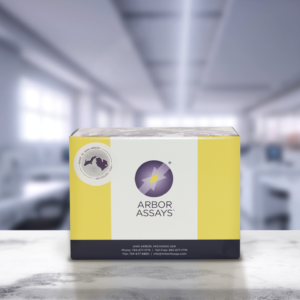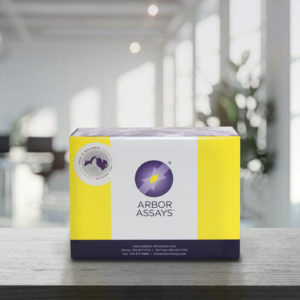
cGMP and Tau Unlock Potential Pathway to Alzheimer’s Treatment
June is Alzheimer’s and Brain Awareness Month, a key opportunity to advocate and promote the hard work of scientists across the globe to treat Alzheimer’s disease and other dementias. One critical area in understanding Alzheimer’s disease is the relationship between cyclic guanosine monophosphate (cGMP) and tau phosphorylation. When abnormally phosphorylated, tau protein can form neurofibrillary tangles. These misshapen proteins are a hallmark of Alzheimer’s disease.
Research into the biochemical pathways influencing tau phosphorylation is vital, as it can lead to new therapeutic strategies. A recent publication has shed light on how cGMP influences tau phosphorylation, providing new insights into Alzheimer’s pathology.
Utilizing Arbor Assays’ cGMP Direct ELISA Kit
A collaboration of Italian and Dutch scientists explored the role of cGMP in tau phosphorylation. They used various models, including rat hippocampal slices and mouse neuro-2a cells, to investigate how cGMP influences tau phosphorylation.
One key tool in their research was Arbor Assays’ DetectX® cGMP Direct ELISA Kit (K065-H). This kit allowed the researchers to precisely measure the intracellular levels of cGMP following treatment with Vardenafil, a selective phosphodiesterase 5 (PDE5) inhibitor that increases cGMP levels. The accuracy and reliability of the kit were crucial in enabling the researchers to link cGMP levels with subsequent tau phosphorylation events.
PKG Phosphorylates Tau at Specific Sites
The study’s findings were a significant boost to Alzheimer’s research. The group demonstrated that protein kinase G (PKG), activated by cGMP, phosphorylates tau protein at specific serine and threonine residues. Notably, they found PKG phosphorylates tau at Ser214, a site associated with a reduction in pathological aggregation of tau. This phosphorylation did not occur at Ser202, another site typically linked to tau aggregation in Alzheimer’s disease.
These results highlight the complex regulatory mechanisms of tau phosphorylation and suggest that enhancing cGMP levels could be a potential therapeutic strategy to mitigate tau pathology in Alzheimer’s disease.
Arbor Assays Proudly Supports Alzheimer’s Research
The implications of this study are potentially profound. By uncovering a new pathway through which tau phosphorylation can be regulated, the research opens additional avenues for therapeutic intervention. Drugs that modulate cGMP levels could potentially be used to influence tau phosphorylation and reduce neurofibrillary tangles in Alzheimer’s patients.
The team at Arbor Assays is proud to provide high-quality assay kits that facilitate such groundbreaking research. The cGMP Direct ELISA Kit is just one example of our kits used in the scientific community. Over a dozen studies on Alzheimer’s disease and other dementias have utilized Arbor Assays kits, helping to advance research in neurodegenerative diseases. As researchers continue to unravel the complexities of Alzheimer’s disease, the scientific community gets ever closer to effective treatments for this devastating condition.
Interested in learning more?
Featured Products
-
In Stock
Cyclic GMP Direct ELISA Kit – Improved Sensitivity
$460.00 – $1,837.00The DetectX® cGMP Immunoassay Kits - Improved Sensitivity is designed to measure cGMP directly and conveniently lyse, stabilize and measure in one step.


